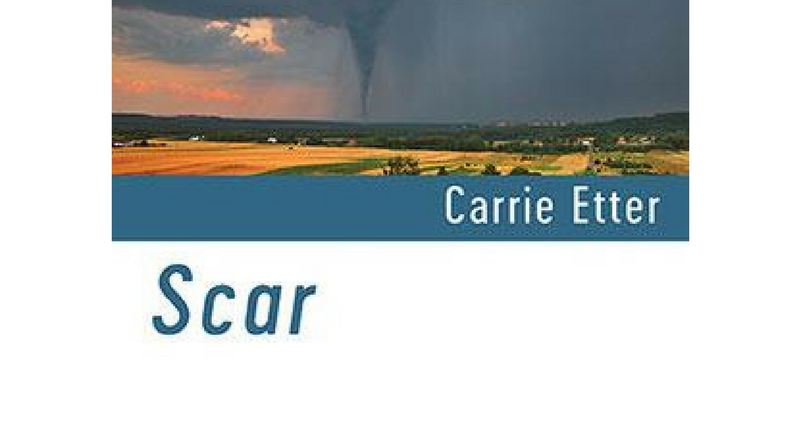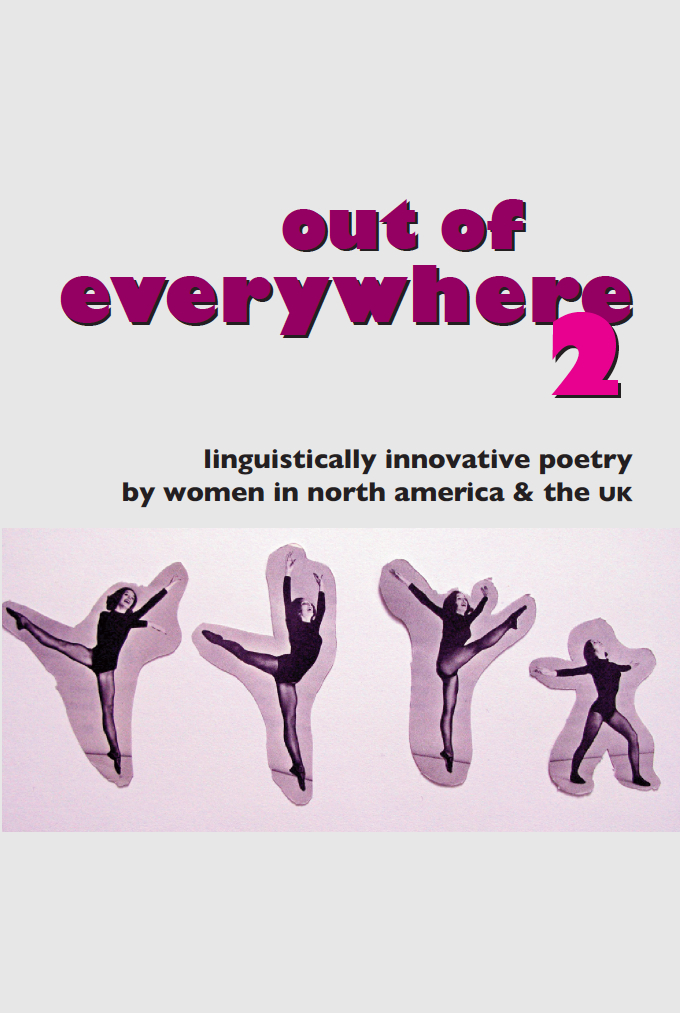Scar by Carrie Etter
-Reviewed by Katy Lewis Hood –
The scar in the title of Carrie Etter’s recent pamphlet is a mark ‘in the earth’, so large that it is ‘visible/from space’. Published almost contemporaneously with the announcement of a new geological epoch – the Anthropocene – to mark the extent of human impact on the planet, Scar is in many ways an elegy for the environment. Yet through all its twists and turns (echoing the tornado on the cover) the single, long poem contained within sustains a combination of magnitude with intimacy.
Set in Etter’s own hometown of Normal, Illinois, the pamphlet draws connections between identity, consciousness, and landscape. These connections emerge not only from Etter’s language, but also through her use of space: on the ‘prairie’, observations are spaced out, as if looking out over ‘the far horizon’. If, as Bank of England governor Mark Carney warned memorably in 2015, climate change is the ‘tragedy of the horizon’, then Etter’s sparse poetic landscapes create the conditions for its materialisation, arriving ‘today, tomorrow’. As she writes in ‘Prairie’, a poem from her earlier collection Divining for Starters (2011), ‘prescience loses particularity’ in this kind of place.
From here, Scar traces a series of extreme and unpredictable weather events, listed laconically in a column: ‘tornado/drought/flood/heat wave/blizzard’. Over the course of the poem, these events heap up, becoming plural, with devastating effect on both community and language:
more tornadoes
one scours a half-mile-wide path through Fairdale
flattens / twists / hurls homes / cars / a child’s treehouse
By disassociating verbs from nouns, Etter creates a sense of disorder in the syntax of the line, suggestive of the damage of the tornado. This line becomes the eye of the storm begun on the previous page by increasingly climactic – and climatic – repetition: ‘more heat/more pests/more disease’. Elsewhere, place and livelihood crumble in the barest language, leaving only ‘the apology song with its one shrill note’, resounding from the blank space of the page. These shifting, contrasting rhythms make up the poem’s own distinctive, unpredictable weather pattern.
In amongst these rhythms, we find characters and narratives to hook on to, however briefly. These are not isolated fragments, but instead hint at different kinds of relationship, ranging from the familial to the social to the ecological. An Illinois farmer is placed in proximity to a mother in Egypt; despite their differences, both are experiencing loss. These relationships also go beyond the human, as the poem acknowledges the effects of a changing environment on plants and animals: the ‘common moorhens’ and ‘timber rattlesnakes’ and ‘marsh wrens’. Combined and juxtaposed, they invite multilayered responses, evoking emotional states that shift at the same rate as the weather. The poem’s most overtly emotive moments though come in the blizzard section towards the end:
a helicopter—with such snow, such winds—
cannot deliver the heart
in time
This comes only a few pages after the pamphlet’s longest narrative section, in which the speaker watches her father’s increasing desperation while trying to contact her mother during a fierce snowstorm. By appealing to the personal and the familial, Etter suggests that climate change is not only the tragedy of the horizon, but also a tragedy at home.
In Scar, then, an observer can never achieve true distance from unfolding events, but rather remains as immersed as the ‘soybeans submerged in water’ on the very first page. Yet such immersion isn’t always bleak. At sporadic intervals, the poem is interrupted by flashes and shimmers of movement and sound, presented as bracketed bursts of energy:
(off-page I am
feline slink,
butterfly shiver,
fish glide, I am
animal amid)
Here, sonic echoes – from ‘slink’ to ‘shiver’ to ‘fish’, from ‘feline’ to ‘butterfly’ to ‘glide’ –create interconnections across the lines; even the seemingly desolate landscape of ‘stunted stalks, palest soil’ is shown to harbour a complex, living ecosystem of which the speaker is a part. As a result, the mark that Scar leaves is not clear cut, but rather shifting, responsive, and intricate. Inviting attention to details as well as large-scale effects, Etter’s pamphlet makes a haunting yet vital contribution to environmental poetry.






Sounds to be a very interesting pamphlet, and, in addition to giving me an insight into Carrie’s latest work, I learn that mankind’s time on Earth is now tagged the Anthropocene Era.I shall now order the pamphlet – thanks as usual Sabotage.
That was quick – received the pamphlet today vis Amazon Marketplace.
Will report back once I have properly absorbed SCAR.